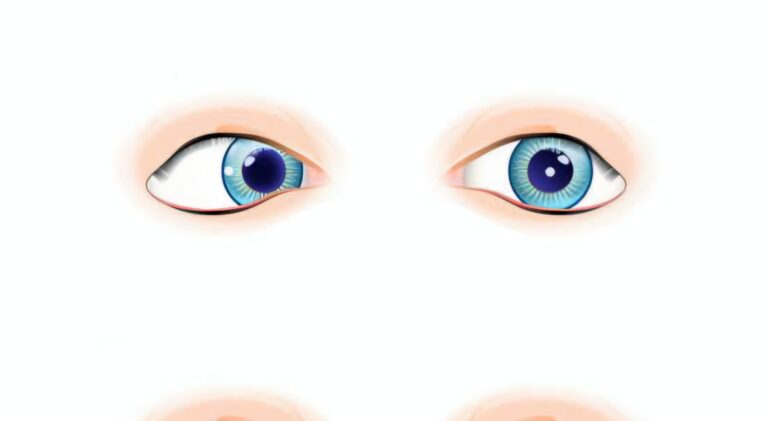
Can Squint Eye Be Corrected?
Squint eye, also known as strabismus or cross eyed, is a condition where both eyes do not align properly. This means that while one eye remains straight and normal, the other may turn up, down, towards the nose, or the ear. Squint eye occurs when the muscles around the eyes are either weak or not functioning properly. It can be treated through squint eye treatment, which includes vision therapy, eye exercises, and in some cases, squint eye surgery. If non-surgical methods do not work, squint surgery becomes the best option for correction.
So basically, cross eyed can occur at any age, but it mostly affects children. Along with strabismus, other problems that may occur include double vision, difficulty focusing, and trouble with depth perception. In many cases, the condition can worsen because everyone experiences it differently. The brain may start ignoring the image from the weaker eye to avoid double vision, which can lead to lazy eye (amblyopia). However, the good news is that there are various squint eye treatment options available, ensuring that the condition can be managed effectively.
In this blog, we will explore the various causes of crossed eyes and whether it can be corrected in adults. Furthermore, we will look at the different treatment options available for this condition. We will also discuss whether strabismus can be treated naturally and what happens if it is not corrected naturally. Lastly, we will explore the available strabismus surgery options for effective treatment.
What causes squint eyes?
There are many reasons why a person may develop a squint eye. While many believe it to be a hereditary condition, let’s explore whether that is true or not.
Here are some common causes of crossed eyes:
Weak eye muscles: The muscles around the eyes help them move together. If these muscles are weak or do not work well, one eye may turn in a different direction.
Nerve problems: The brain controls the eye muscles by sending signals through nerves. If there is a problem with these nerves, it can cause a squinting eye.
Family history: Strabismus can run in families. If a parent or grandparent had crossed eyes, a child may have a higher chance of developing it too.
Refractive errors: Vision problems like farsightedness (hyperopia) can make the eyes work harder, which may lead to a squint eye over time.
Eye injuries: Any injury that affects the muscles or nerves around the eyes can cause strabismus. Since strabismus often happens due to weak muscles, damage during eye surgery can increase the chances of this condition.
Premature birth: Babies born too early may have weak eye muscles, which can increase the risk of squinty eyes. This is why crossed-eyes problems often develop at a young age, especially in babies born prematurely.
Brain conditions: Certain medical conditions, like cerebral palsy or a brain tumor, can lead to squinted eyes.
Can Squint eye be corrected in adults?
Strabismus is a treatable condition. Treatment options include eye exercises, Botox, vision therapy, and squint eye surgery.
Let’s explore the different treatment options available for crossed eyes in adults:
Eye exercises
Some types of squint eye can be improved with special eye exercises. These exercises aid in enhancing coordination and strengthening the eye muscles. An eye specialist in Nagpur can recommend the right exercises based on the type of squint eye.
Botox injections
Botox (Botulinum toxin) is often used for cosmetic purposes to relax overactive muscles. The same method can help align the eyes by addressing muscle-related issues in the squint eye. However, while it is an effective solution, it is not a permanent one.
Vision therapy
Another squint eye treatment option is vision therapy, which includes a set of exercises and activities that help train the brain and eyes to work together properly. This treatment is often combined with other methods for better results.
Squint eye surgery
Finally, we come to the most effective and lasting treatment for squint eye—strabismus surgery. Since it involves incisions and muscle adjustments, it is usually considered the last option if other treatments do not work. In this procedure, an eye surgeon adjusts the eye muscles to correct alignment. This strabismus surgery is safe and commonly performed by an eye specialist in Nagpur at ABO Eye Institute. Recovery time is short, and most people notice improvement in their vision soon after.
Can Squint Eye Be Corrected naturally?
Of course, people prefer natural methods before considering squint eye treatment or surgery. Some natural ways to manage strabismus include lifestyle changes like maintaining a healthy diet, as the vitamins you consume impact your eye health. Reducing screen time is another important factor to consider if you want to improve crossed eyes naturally. However, it is still necessary to consult an eye specialist in Nagpur to learn effective eye exercises that can help strengthen eye muscles and improve focus. If these natural methods do not work, visiting ABO Eye Institute in Nagpur is recommended, as they have the best eye specialists in Nagpur for proper evaluation and treatment.
Conclusion
Squint eye, also known as cross-eye, occurs when the eyes do not align properly. It can be caused by weak eye muscles, nerve issues, or vision problems. Some people are born with it, while others develop it due to injury or medical conditions. The good news is that squint eye treatment is available! Options include eye exercises, vision therapy, Botox, and squint surgery. While natural methods may help in mild cases, more serious cases require medical attention. If you or someone you know has strabismus, visit an eye specialist in Nagpur for expert care and the right treatment.


